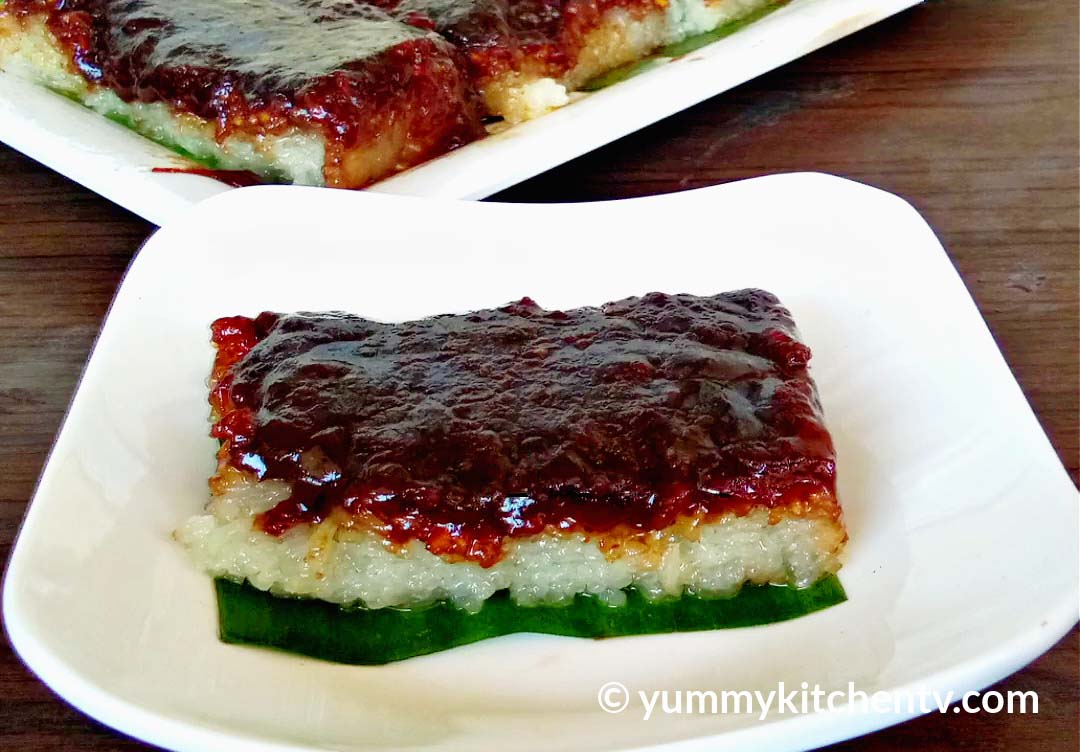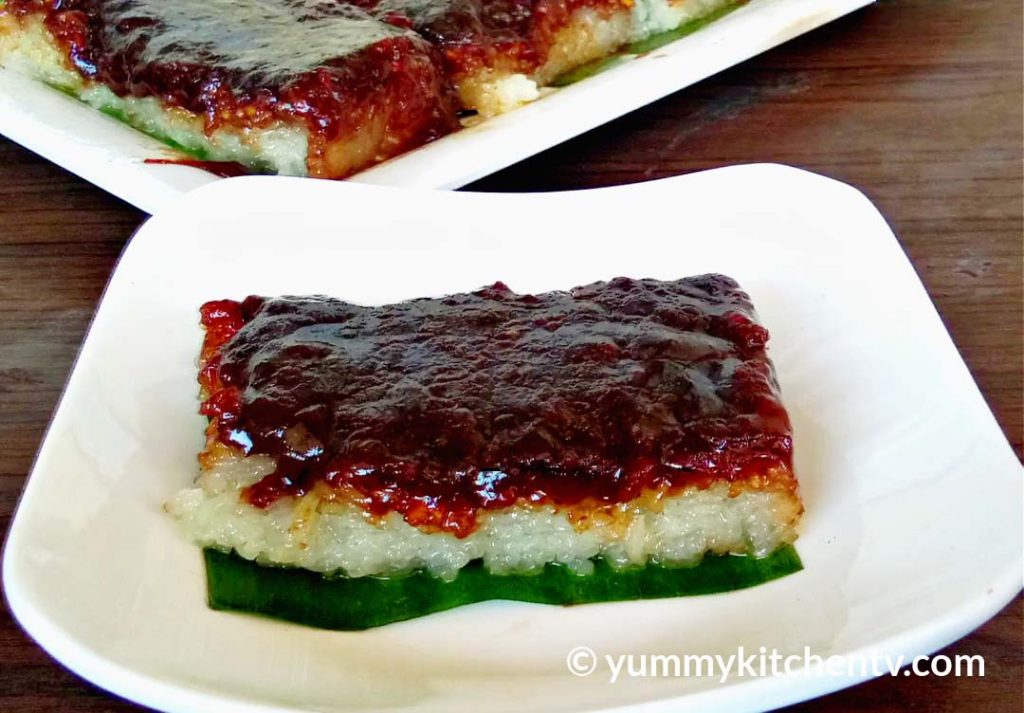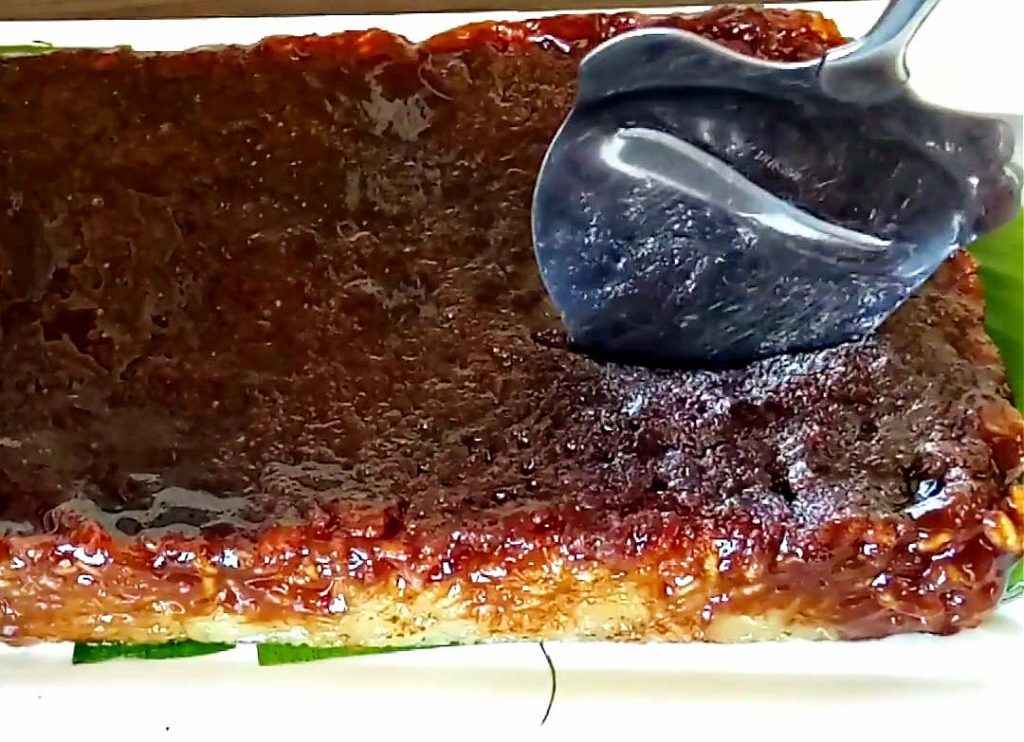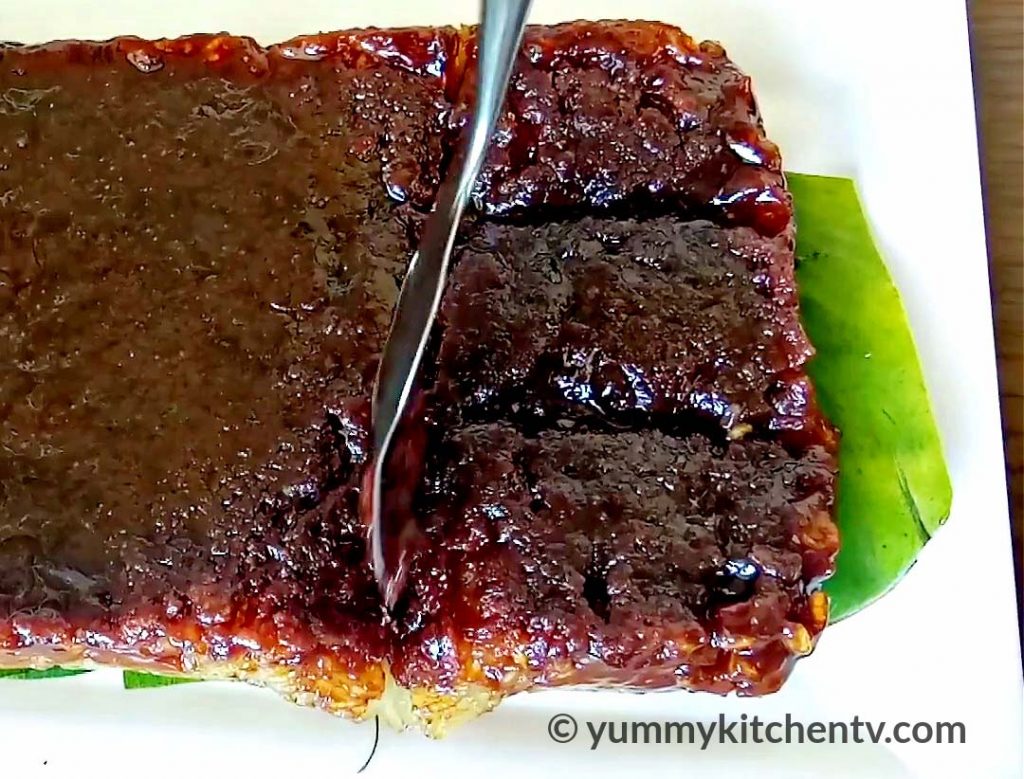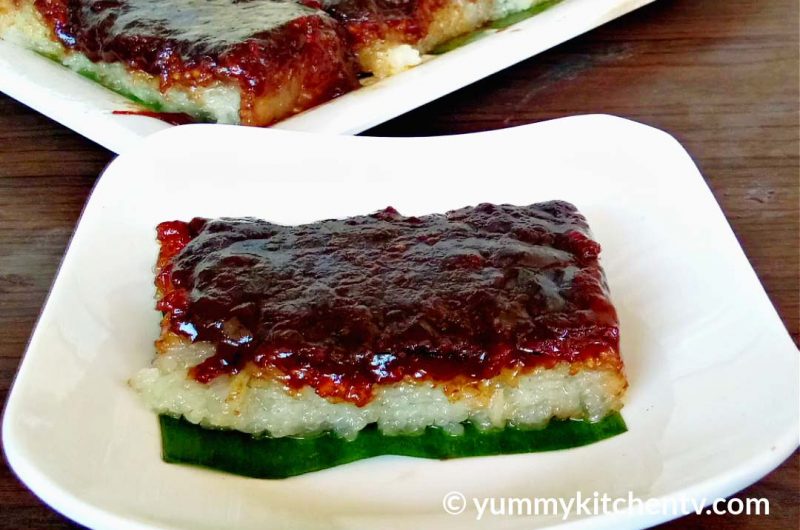Bibingkang Malagkit is a Filipino kakanin made by baking a mixture made with sticky rice, sugar, coconut milk and pandan stalk. This Filipino sticky rice cake is very popular in the Philippines and this recipe will help you make a best bibingkang malagkit for your family and friends. This is not that delicious bibingka sold during simbang gabi, but more of a modified biko. Try this recipe and enjoy your day with best Bibingkang Malagkit.
BIBINGKANG MALAGKIT
The very first time I made my bibingkang malagkit was during our Christmas and family reunion. And it’s not just the snack size – I made a large batch of it. Good thing I made it a good one. The stirring of the rice on a large wok really contributed on how strong my arms are now.
I rarely make this dish but when I do it, I do large batches and people ask for more. It’s not just the fun of sharing the bibingkang malagkit you cooked to your loved ones but also seeing them enjoy the food. I really like adding extra sugar to my bibingkang malagkit, so I am putting coconut flakes on top.
I was surprised on the different topping some of my family members are putting on their bibingkang malagkit. Some of them put cheese, some added more sugar, and the most surprising topping, chocolate spread! My family was creative!
HOW TO MAKE BIBINGKANG MALAGKIT
In making the bibingkang malagkit, you first prepare the sticky rice. The sticky rice is commonly called glutinous rice or the “bigas na malagkit” when you go to the market. This is the only type you should use in making this snack. The level of stickiness of this kind of rice will allow the resulting dish in a firm shape. Wash the sticky rice and drain. Set it aside for a while.
The top part of a bibingkang malagkit is a rich sweet sauce made from coconut milk and brown sugar. This is called the “latik” or coconut caramel. In making the coconut caramel, put 2 cups of coconut milk in a pan and then add the brown sugar. Stir gently and allow the sugar to dissolve. The resulting color of the sauce will be brown due to the caramelization of the coconut milk and also due to the natural color of the brown sugar. Be wary on cooking your coconut caramel. It must be brown and not dark brown. A very dark brown coconut caramel may mean that the caramel was overcooked and might taste bitter and burnt. When the coconut caramel is thick enough, remove it from the heat.
In another pan, put the rest of the coconut milk and add your pandan stalk. Tie your pandan stalk so that it will be easily removed for later. When the liquid is boiling, that is the perfect time to add the sticky rice. Stir it occasionally to prevent it the bottom from burning. Allow the liquid to sip into the sticky rice and cook until the liquid is reduced to half. Now, remove the pandan stalk and add the white sugar.
Continue cooking and check on the sticky rice. If there are no liquid left and the rice is sticking in the spatula, remove the rice from heat. Transfer the rice in a baking pan lined with banana leaf. It was the traditional bibingka aesthetic which was the reason why banana leaf is used in most of the kakanins. Flatten the rice evenly in the baking pan and spread the coconut caramel on the top. Bake the mixture for 45 minutes at 160C. Another way of knowing that the bibingkang malagkit is cooked when the top is firm and dry. Take the baking pan out and cut the bibingka into serving pieces. Serve it warm and enjoy.
This kakanin is really sweet enough to satisfy your sugar cravings. Be sure to enjoy this classic dish!
Bibingkang Malagkit
Course: Desserts, Filipino Recipes, Rice Recipes10
servingsIngredients
2 cups sticky rice
5 cups coconut milk
½ cup white sugar
1 ½ cup brown sugar
1 pandan stalk
Directions
- Wash the sticky rice. Drain and set aside.
- Making the coconut caramel: In a pan, put 2 cups of coconut milk and the brown sugar. Stir gently and occasionally. Simmer until thick, then remove from heat. Set aside.
- In another pan, put 3 cups of coconut milk. Add the pandan stalk and let it simmer. When boiling, add your washed sticky rice. Stir occasionally and cook for 20 minutes.
- When liquid is reduced to half, and the sticky rice is cooked, add the white sugar. Remove the pandan stalk.
- When the mixture is already sticking in the spatula and there is no liquid, remove the sticky rice from heat. Transfer to a baking pan lined with banana leaf. Flatten and spread the rice evenly. Add the latik or coconut caramel on top. Flatten.
- Bake in a preheated oven for 45 minutes at 160C or until the top is dry and firm.
- Serve and enjoy!
Remarks
bibingkang malagkit is a kakanin malagkit and is made by malagkit rice. It is very popular in philippines and this bibingka malagkit recipe and this is with biko recipe with caramel toppings. we are sure that you will like this bibingkang malagkit recipe. If you are looking for how to make bibingkang malagkit then this is the recipe perfect for you to make a wonderful bibingka kakanin

